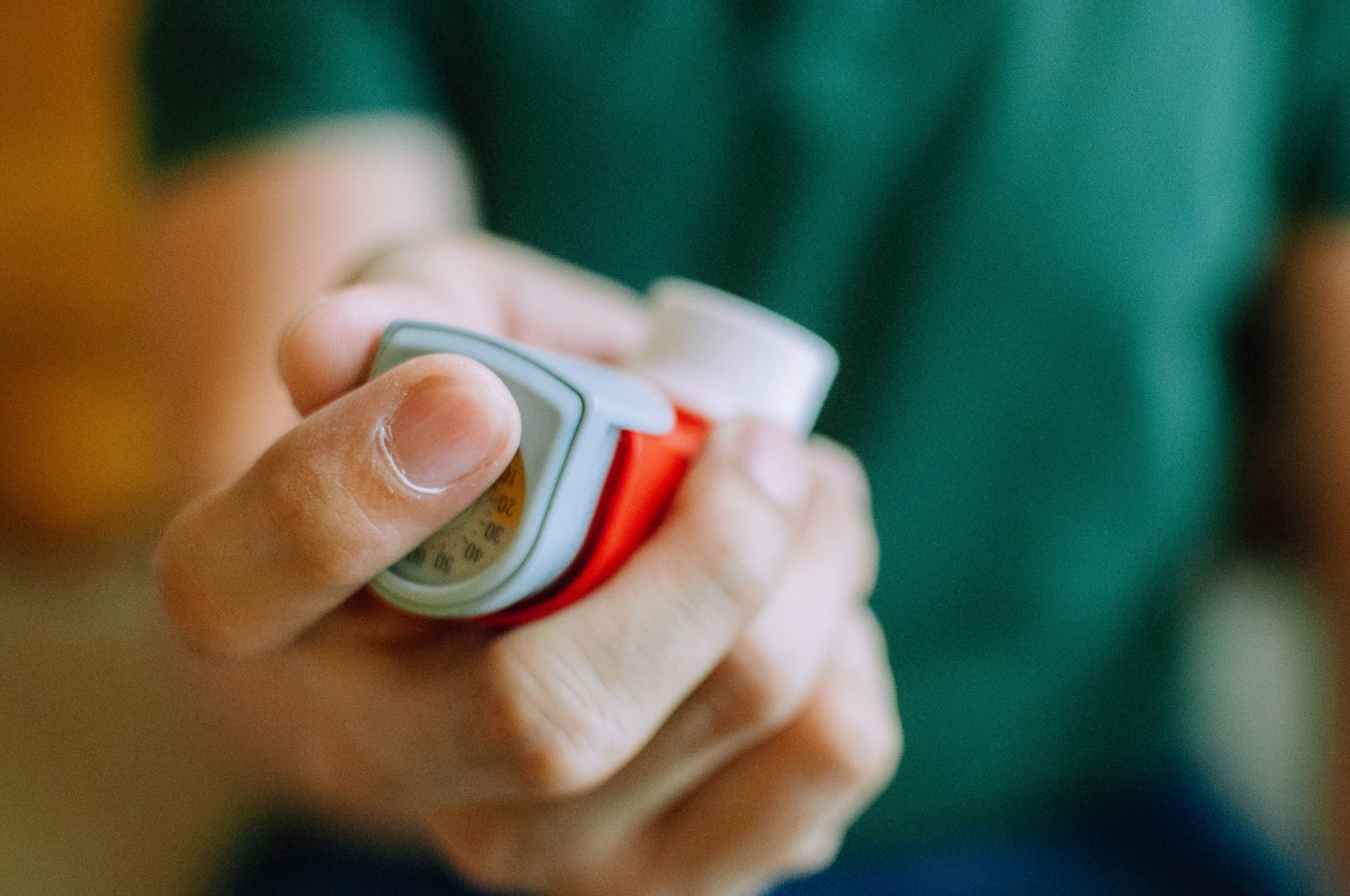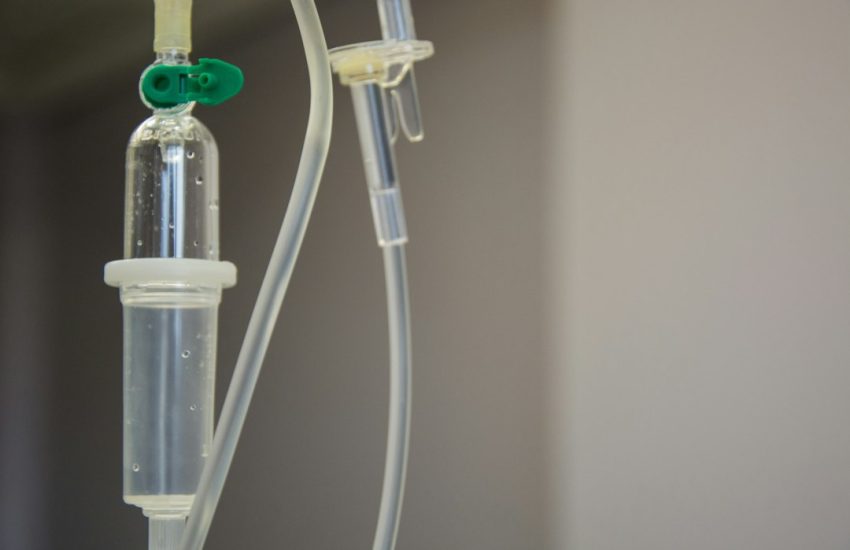12 Ways to Prevent and Treat Wheezing
Wheezing is an uncomfortable symptom of asthma and is associated with shortness of breath. The best way to treat wheezing is by finding its cause and treating it accordingly. It is a dangerous symptom that appears when there is an infection, obstruction, or foreign body inside of your airway.
It is considered to be a common respiratory complication that can sometimes occur during a cold, asthma, and pneumonia. In this article, you’ll find out the best ways to prevent and treat wheezing so that it doesn’t interrupt your day!
The recent study published in the International Journal of Chronic Obstructive Pulmonary Disease suggests that vitamin C supplementation could be beneficial for individuals experiencing wheezing, a common symptom associated with Chronic Obstructive Pulmonary Disease (COPD).
According to the systematic review and meta-analysis, which included 10 randomized controlled trials with 487 participants, supplementation with at least 400 mg/day of vitamin C significantly improved lung function, as indicated by increases in forced expiratory volume (FEV1%) and the FEV1/forced vital capacity ratio.
These improvements in lung function could potentially alleviate symptoms like wheezing by enhancing the antioxidative capacity in the serum, specifically increasing levels of vitamin C and glutathione (GSH). However, it’s important to note that the study also calls for further research to fully understand the role of vitamin C in improving nutritional status and overall respiratory health.
For individuals struggling with wheezing due to COPD or similar respiratory conditions, this study provides a promising insight into the potential benefits of vitamin C supplementation, but it should be considered in conjunction with medical advice from healthcare professionals.
For more detailed information, refer to the study “Efficacy of Vitamin C Supplementation on Chronic Obstructive Pulmonary Disease (COPD): A Systematic Review and Meta-Analysis
Different types of wheezing are related to different causes, which can be asthma, pneumonia, laryngitis, croup, and more. But if you or someone you know has issues with wheezing, try these tips to feel better soon!
Contents
Steam Inhalation
Steam inhalation can help to relieve a person from coughing, wheezing and shortness of breath by reducing the inflammation in their airways. This is because steam inhalation reduces the acidity of the airway due to high humidity levels.
You can either use a hot water bottle or hands-free vaporizer to heat up the room and moisten the air (a humidifier will also do). When you are done, take a few deep breaths while inhaling the scented vapor.
This has been shown to decrease the mucus in the throat, which reduces coughing. In addition, steam inhalation has been shown to decrease inflammation and ease pressure if wheezing is being caused by asthma. Inhalation therapy can be helpful both when the person is feeling unwell and may prevent the development of long-term complications related to the respiratory tract.
If you’ve been diagnosed with allergic rhinitis and have been told to avoid the cold, this may be the perfect time to learn about steam inhalation therapy. This technique can help reduce wheezing in people with asthma as well as those who suffer from allergies.
Hot Drinks
Muscles in the airways produce a strong contraction that blocks the airway, which leads to wheezing. Hot drinks are thought to make this happen because they dilate the airways and loosen mucus, which can make breathing more comfortable for people with asthma.
These drinks should be taken slowly and allowed to cool before drinking again. Some hot drinks that can help with wheezing include hot tea, hot coffee, and chamomile tea. Hot drinks can also be helpful in relieving chest congestion and coughing.
Hot drinks can help in two ways:
1) by dilating the airways
2) by giving people a sense of comfort. People with asthma need to be able to drink hot beverages but also want to avoid caffeine, which has been shown to exacerbate their condition. The best option is iced tea or warm lemon water.
Breathing Exercises
The best way to prevent wheezing is to exercise your breathing muscles regularly. Yoga and tai chi are some good options for building up these muscles. To help limit and prevent wheezing you can practice deep, slow breathing.
This will help regulate the strength of your lungs and keep them from becoming too strained to fit in enough air. Another way to prevent or treat wheezing is by practicing a strengthening technique called the Valsalva Maneuver. This technique involves contracting your muscles around your chest and throat area as you breathe out.
There are a variety of breathing exercises, but the most common one is called abdominal-belly breathing or slow breathing. This exercise can be done when sitting or lying down with your back against a wall or on the floor. To perform abdominal-belly breathing, inhale through your nose first and then exhale only through your mouth in long, controlled breaths.
Humidifiers
Humidifiers help relieve the dry air that exacerbates wheezing by decreasing its severity. It helps relieve dryness in the nose and throat by adding moisture back into the air. The moist air can then go back into the lungs and ease coughing.
Humidifiers help to prevent and treat wheezing by increasing the humidity of the air. They are easy to use and inexpensive, so it is easy to add one to your bedroom or office for a quick boost in lung health.
They can provide relief for those with respiratory illnesses. This includes those who have asthma and allergies, but it can also help those who suffer from sinus conditions. Humidifiers come in all shapes and sizes, and they’re easy to find online and in stores.
Studies have also shown that it can help protect your lungs from bacteria and other infections by trapping water vapor in the air. Humidifiers are often used during colds as well. Humidifiers also help reduce the risk of infection, ease breathing, and increase comfort levels among those living with asthma.
Air Filters
Air filters remove large particles in the air that cause wheezing by trapping them inside a filter. By replacing air filters regularly, you can prevent a number of illnesses and diseases.
The air filters remove large particles that could harm people with allergies, like dust and pollen. The air filter also pulls out smaller particles like mold spores and cigarette smoke. These devices are designed to trap these contaminants before they enter your lungs and can help reduce asthma flare-ups as well.
The idea of an air filter is simple: to clean the air that comes into a building. These filters are typically installed in the main lobby of a building, where people will spend more time. They should be placed several feet away from and above eye level, and they should be easily visible or accessible.
In addition to this, the filter needs to be easy to clean and have some sort of anti-bacterial coating. Different brands require different maintenance schedules like cleaning weekly or monthly; this could vary by manufacturer as well.
Identifying Triggers
Some triggers that can cause wheezing are allergens and pollutants. Some common allergens include dust mites, mold, animal dander, cockroaches, and pollen. Pollutants that can trigger wheezing include cigarette smoke, air pollution, and industrial emissions.
Wheezing can happen during an asthma attack, which causes labored breathing and thick mucus that blocks airways. It can also happen when an overreaction to irritants such as chilly weather, dust, or smoke causes inflammation in the airway.
It is usually associated with a dry throat and tightness in the chest. You may also be able to tell a person has wheezed by their characteristic expression – lips pursed, eyes narrowed, often with drool escaping from one corner of the mouth.
Allergy Medication
Allergy medication is typically prescribed if your wheezing is caused by an allergic reaction. It relieves the symptoms and prevents them from returning in the future. If you have been prescribed allergy medication, make sure to take it as directed on your prescription label.
Antihistamines, decongestants, and corticosteroids can be used to reduce mucus production in the lungs which will lessen the amount of mucus that gets caught in the airways. These medications should be taken as prescribed by a doctor.
If you have allergies, it’s important to avoid allergens whenever possible. If you’re having trouble breathing, try using allergy medication to make your symptoms easier to manage.
Bronchodilators
Bronchodilators are medicines that help to open the airways. They relax muscles in the airways, making it easier for a person to breathe. They come in two forms: oral inhalers and nebulizers. If you feel like you are wheezing, it is important to start treatment as soon as possible with bronchodilators.
Bronchodilators are available to help patients with mild or moderate asthma. They can be applied only in cases of life-threatening asthma attacks or emergencies. Bronchodilators work by dilating airways and allowing more oxygen to enter the lungs.
When given intravenously, these medications act quickly and relieve wheezing symptoms. They are also used as a short-term remedy for asthma or COPD attacks.
They can help you breathe better and are effective in managing asthma symptoms. However, they should never be used as an alternative to good asthma prevention practices such as taking preventive medications regularly and avoiding smoking for a period of time.
Immunotherapy
Immunotherapy has been a successful treatment for many allergic diseases, such as asthma. It works by improving the immune system’s response to allergens, or anything that can cause an allergic reaction. The goal is to train the immune system so it can better protect against things like pollen, dust mites, ragweed, and other triggers of symptoms.
In order to successfully treat wheezing, the doctor will customize an immunotherapy treatment specifically for that patient. Immunotherapy treatments can be administered in a variety of ways including both intravenously and by allowing lung infusion directly into the bronchioles.
Immunotherapy may be able to help you completely or partially stop your wheezing. Immunotherapy can also help minimize other symptoms like cough and difficulty breathing.
Pursed Lip Breathing
Pursed lip breathing is a technique that many children and adults with asthma may find helpful. When using this technique, you inhale deeply through your nose while taking in the air slowly through your pursed lips.
This helps to avoid the cause of wheezing and prevents further episodes of coughing as it allows for more oxygen to enter the lungs. The technique is performed by making small circles with your lips inward while inhaling deeply.
When people are wheezing because they have colds or influenza and their airways become temporarily constricted, pursed lip breathing may help them breathe more easily. It may be difficult to do, but it is effective in calming the lungs down during asthma attacks.
Be Mindful Of Cold Temperatures
Every winter, a lot of people experience wheezing. It can often be caused by cold temperatures and dry air. One way to prevent this is to make sure that your home is properly insulated and has humidity levels between 40-50%. That helps combat the dry air.
In addition, there are inhalers that you can use when you’re experiencing these symptoms. For example, one asthma inhaler contains albuterol which relaxes the muscles in your lungs and allows them to breathe easier.
For those who are most vulnerable and susceptible to cold-related illnesses such as bronchitis and asthma, it is a particularly delicate time. There are many ways to prevent or treat these illnesses in the colder months, including staying up-to-date with recommendations from your doctor about steps you can take to keep yourself safe from the cold.
No Smoking
No smoking is one surefire way to prevent and treat wheezing. Inhaling cigarette smoke, secondhand smoke, or other noxious substances can irritate your respiratory system and trigger an asthma attack. The nicotine in cigarettes can also cause a chemical reaction in the body that may make the symptoms of coughing worse.
Smoking is one of the leading causes of wheezing. If you want to prevent wheezing in your home, stop smoking altogether. If you are a smoker, quitting can be hard, but it’s worth it! If you have been smoking for a long time, give yourself 3 months to identify any triggers for your respiratory problems and avoid them as best you can. The American Lung Association has great resources on its website that may also help reduce wheezing.
Final Thoughts
While there are many reasons for wheezing, the most common are asthma, allergies and colds. If you have a cold, you can prevent more wheezing by taking congestion reliever medicines to reduce the mucus in your lungs. However, if you don’t want to take medications or if your symptoms persist, talk to your doctor about other treatments.
It is important to have a game plan for when and how you treat wheezing. First, you can prevent the condition by staying away from allergens such as dust mites, mold, cockroaches, and pet dander. Second, you should avoid exposure to smoke, polluted air, and exhaust fumes.
Wheezing is usually caused by a viral or bacterial infection, but it can also be triggered by allergies, asthma attacks, colds, or exercise. In rare cases, wheezing may indicate other problems such as fungal infections.
Finally, it is important to take preventive medications in case of an emergency situation where medication might be needed quickly.



